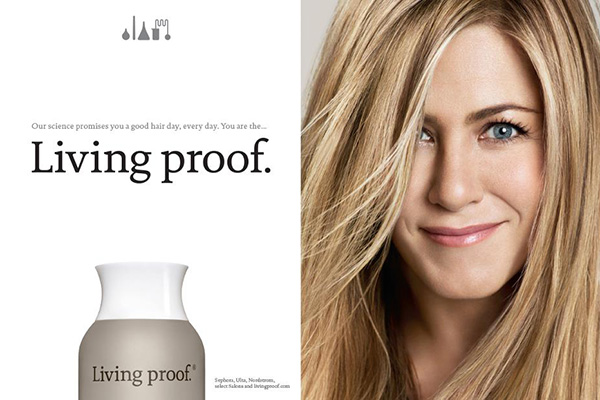Cambridge Hair Product Company Secures $30 Million in Funding
 Photo via Facebook
Photo via Facebook
Cambridge-based Living proof, the hair care company backed by MIT science (and Jennifer Aniston), announced today that it secured $30 million in financing to expand its market presence and invest in new beauty technologies. The financing was supported by new investors including Boston-based Leerink Swann, a healthcare investment bank. You can already buy Living proof products nationwide in Sephora, Ulta, Nordstorm, and QVC.
The company was founded by Jon Flint and Amir Nashat of Polaris Partners of Waltham, an investment group focusing on heathcare, technology, and consumer sectors, and Dr. Robert Langer, the famed Institute Professor at MIT, who earlier this month was awarded the 2013 Presidential Medal of Technology and Innovation by President Obama. Living proof has 13 utility patents. Langer himself has 810 issued and pending patents worldwide for a variety of projects.
While creating Living proof, Langer studied existing beauty products and discovered that most products relied upon outdated technology and ingredients that did not produce real results. By using technologies originating at MIT, like a molecule called PolyfluoroEster, which is used in their No Frizz product line in the place of silicone, Living proof is trying to advance the science of hair care. Silicone, unfortunately, is still the industry standard used in frizz-fighting products, but all it really does is weigh your hair down.
In 2009, a Boston magazine writer went behind the scenes and acted as a test subject in the Living proof lab. She tested the company’s first product, part of the No Frizz line. She found, among other things, that the founders knew the industry needed a change:
Most cosmetics brands have focused on eye-catching packaging, pleasant smells, and celebrity endorsement instead of proven efficacy. “They use all these scientific buzzwords, but it’s just marketing,” says Polaris partner Amir Nashat, a Ph.D. who helped found Living Proof. It took Nashat half a day with a few dozen bottles of gels and sprays in the Polaris conference room to reach the conclusion that the myriad products lining store shelves were basically identical. Besides the fancy packaging and slight variations in texture and smell, there’s nothing novel about a $30 tube of Frédéric Fekkai styling cream.
While sitting in a chair with half a head of product, she discovered the science really does work:
Of course, the beauty business is based on promises and claims. And so the test subject is skeptical. But after a blow-dry, the results are unmistakable: The No Frizz side is sleek; the other markedly fuzzy. The tech takes a clothing steamer to my hair. On the No Frizz side, droplets of water actually roll off. Somewhat dramatically, even.
She also discovered how the company came together mixing hair care with MIT science.
[Flint] and Nashat went to Langer, a wildly prolific inventor with whom Polaris had launched more than 15 biotech companies. “Bob took one look and said the claims being made on the skin-care side—about curing wrinkles and so forth—were completely bogus,” says Flint. “The molecules they were using were way too big to penetrate the skin. That was just the start of it.”
Says Langer, “We’ve helped develop ways to treat patients with all kinds of illnesses—cancer, heart disease. I thought, Well, we can probably tackle frizz.”
Putting our love for local, Massachusetts companies aside, if we have a choice between products made by a team of MIT scientists, or products created in some plant in New Jersey that hasn’t changed their formula in 30 years, we’re going with MIT.
Don’t let this be you. Photo via Facebook.


